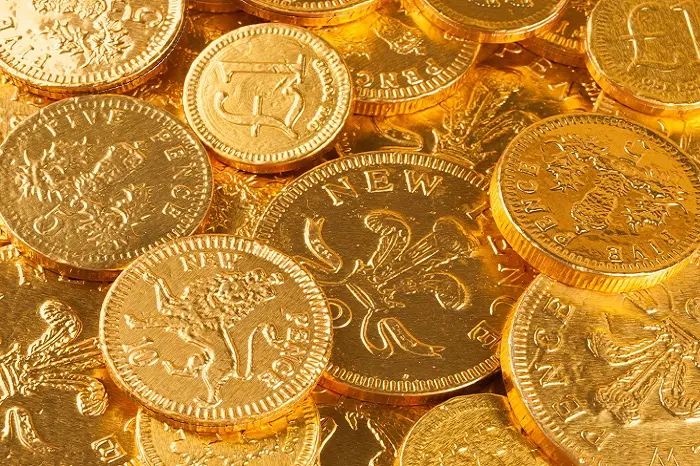Gold jewelry has been cherished for centuries, symbolizing wealth, beauty, and status. However, with the rise of counterfeit products and gold-plated alternatives, knowing how to determine if a necklace is real gold is essential for consumers. This guide will explore various methods, characteristics, and tests you can use to ascertain the authenticity of gold necklaces. Whether you’re a seasoned jewelry enthusiast or a casual buyer, this comprehensive overview will equip you with the knowledge to make informed decisions.
Understanding Gold Composition
Types of Gold
24-Karat Gold: This is pure gold, containing no other metals. It’s known for its rich yellow color and softness, making it less suitable for everyday jewelry.
18-Karat Gold: Comprising 75% gold and 25% other metals (like copper or silver), this type strikes a balance between durability and value.
14-Karat Gold: Made of 58.3% gold, 14K gold is a popular choice for jewelry due to its durability and affordability.
10-Karat Gold: The lowest karat designation allowed for gold jewelry in the U.S., containing 41.7% gold. It is more resistant to scratching and tarnishing.
Gold Plating vs. Solid Gold
Gold-Plated: This involves a thin layer of gold applied to a base metal. Gold plating can wear off over time, exposing the underlying metal.
Gold-Filled: A thicker layer of gold is bonded to a base metal. Gold-filled items are more durable than gold-plated but still less valuable than solid gold.
Key Characteristics of Real Gold
Hallmarks and Stamps
Karat Stamps: Look for stamps like “24K,” “18K,” “14K,” or “10K,” indicating the gold content.
Manufacturer Marks: Many reputable jewelers will also include their logo or name, which can help verify authenticity.
Certification: Some pieces may come with a certificate of authenticity from a reputable source, confirming their gold content.
Color and Luster
Real gold has a distinctive rich yellow hue. Over time, gold may develop a patina or slight tarnish, but it should not turn green or have an uneven color. The luster should be bright and shiny, not dull.
Weight and Feel
Gold is denser than most metals. If a necklace feels unusually light for its size, it may not be solid gold. Use a scale to weigh the piece; if it feels heavier than expected, it could be real gold.
Tests to Determine Gold Authenticity
1. The Magnet Test
Gold is not magnetic. Use a strong magnet to test your necklace. If it sticks to the magnet, it’s likely not gold. However, keep in mind that some non-gold materials may also be non-magnetic.
2. The Acid Test
This test involves applying a small amount of nitric acid to a discreet area of the necklace. If the metal reacts and changes color, it’s not real gold. However, this test can damage the jewelry, so proceed with caution.
3. The Water Displacement Test
Gold is heavy and will sink in water. Fill a container with water and note the level. Submerge the necklace; if the water level rises significantly, it suggests the necklace is made of a denser material like gold.
4. The Scratch Test
Using a ceramic plate, scratch the necklace against it. If it leaves a gold streak, it’s likely real gold. If the streak is black, the piece may not be gold. This test can scratch the jewelry, so use it carefully.
5. Professional Appraisal
If you’re still uncertain, consider taking your necklace to a certified appraiser or jeweler. They have specialized equipment and expertise to accurately assess gold authenticity.
Other Considerations
Age and Origin
Older pieces, particularly those made before the 20th century, may be more likely to be real gold due to the quality of craftsmanship. Additionally, some regions are known for higher-quality gold production, which can provide clues to authenticity.
Design and Craftsmanship
Well-made gold jewelry often features detailed designs and quality craftsmanship. Look for smooth edges, solid links, and a well-finished surface. Cheaply made pieces may indicate lower-quality materials.
Ask for Documentation
When purchasing a necklace, ask the seller for documentation regarding its authenticity. Reputable jewelers should provide proof of gold content and the origin of the piece.
Caring for Your Gold Necklace
Cleaning and Maintenance
To maintain your gold necklace’s luster, clean it regularly. Use a mild soap solution and a soft cloth. Avoid harsh chemicals and abrasive materials that can scratch the surface.
Storage Tips
Store your gold necklace in a soft pouch or jewelry box to prevent scratches and tangling. Avoid exposure to moisture, which can lead to tarnishing over time.
Regular Inspections
Regularly check your necklace for signs of wear, such as loose clasps or broken links. Addressing these issues promptly can help maintain the integrity of the piece.
Common Myths About Gold Jewelry
All Gold Jewelry is Expensive
While solid gold pieces can be costly, there are affordable options available, such as gold-filled or lower-karat gold items. It’s essential to evaluate quality over cost.
Real Gold Never Tarnishes
Gold can tarnish if it is mixed with other metals. Higher-karat gold tends to tarnish less than lower-karat alternatives, but it can still happen.
The More Gold You Buy, the Better the Investment
Investing in gold jewelry can be different from investing in gold bullion. Jewelry often carries additional costs for design and craftsmanship, which may not translate into resale value.
Conclusion
Determining whether a necklace is real gold requires a combination of knowledge, tests, and careful observation. By understanding the characteristics of gold, employing various testing methods, and consulting professionals when necessary, you can confidently assess the authenticity of gold jewelry. Whether you’re looking to buy or simply appreciate your existing pieces, this guide empowers you with the information needed to navigate the gold jewelry landscape. As always, exercise caution and conduct thorough research to ensure your investment in gold jewelry is a sound one.
Related topics:
- Understanding Gold on MT4: A Comprehensive Guide
- Understanding Gold by the Ounce: A Comprehensive Guide
- Understanding Scrap Gold Prices: A Comprehensive Overview


